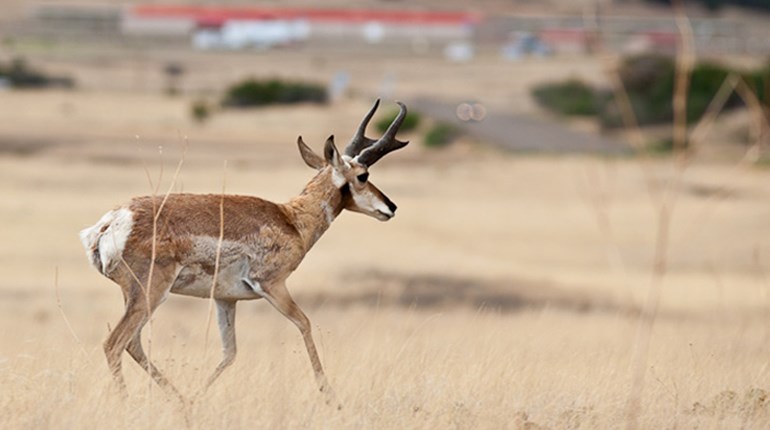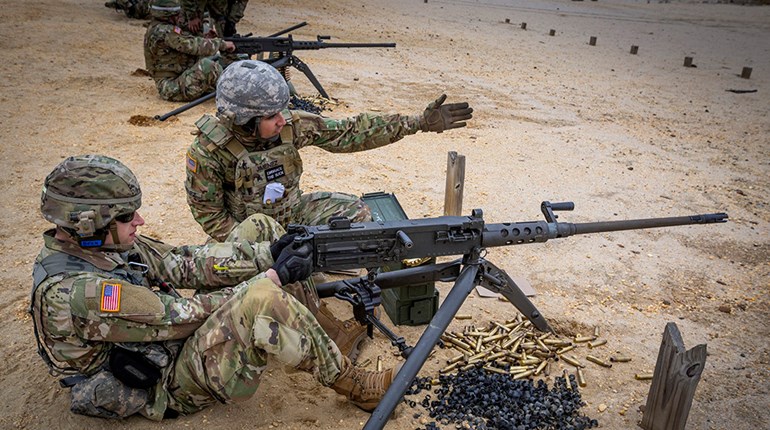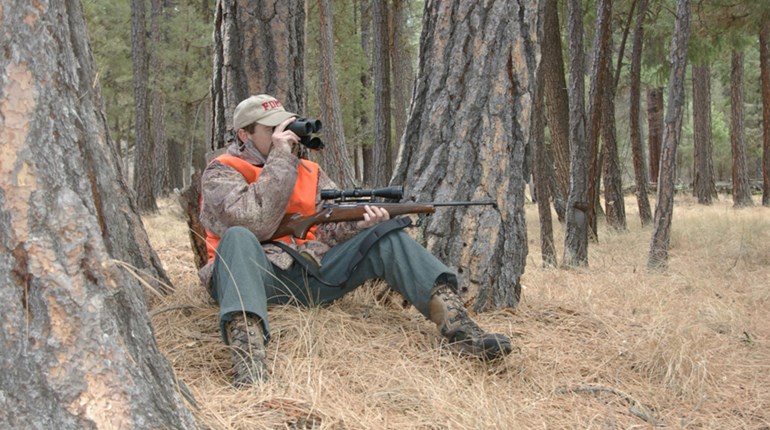
The rust-and-white colored pronghorn simply stood and stared, and after I flipped the white flag I was holding one more time in a big arc overhead, it threw all caution to the wind and started trotting my way. When it was about 100 yards away, I slowly rested my rifle atop extended bipod legs, settled the crosshairs in the riflescope and squeezed the trigger. After my shot, the pronghorn staggered sideways and collapsed in a heap. I now had fine dining for my table in the months ahead.
As a new hunter, or one who possibly lives east of the Mississippi, you could be left wondering what pronghorns are. Sometimes referred to as antelopes, pronghorns are actually in the family artiodactyls, meaning they are an even-toed ungulate—so they’re not really antelopes at all. They’re not related to deer, but they’re deer-sized, and like deer, males are known as bucks and females as does. Unlike deer, many does do have horns (and they are horns, not antlers), but the a doe’s horns will never grow past her ears or develop the characteristic “fork.” They’re commonly found in places like New Mexico, Colorado, Wyoming, the Dakotas and Montana, but no matter where they are found, this species is very popular with big-game hunters.
Why? First, there are the stunning markings, white against rust, on a pronghorn’s body. There’s also a noticeable mane running along the back of the neck. And no one forgets the sight of a pronghorn’s dark horns as they sweep up and then curl back at the tips to form a “heart” shape. When you do spot a pronghorn, look as quickly as possible…because once a pronghorn decides it’s seen enough of you, it will probably disappear in a cloud of dust.
It’s important to note that a pronghorn has vision eight times better than yours. When you see a pronghorn through an 8X binocular, this is how the pronghorn sees you—and other dangers—all the time. Should that pronghorn decide to flee, it can run at speeds up to 60 miles per hour for prolonged periods of time. This is why some hunters refer to them as “speed goats” (although, once again, pronghorns are only distantly related to goats).
Take ‘em Tactics
For an animal that can see far and is a master at avoiding hunters and danger, the pronghorn does have an oddity that can get it in trouble or bring it well within range of hunters’ rifles—and that’s curiosity. When it sees something strange, it often comes to investigate. That’s where the hunting tactic known as “flagging” comes in. It’s simple—just wave a small white flag about the size of a standard handkerchief in an arc across the top of the sage brush. This can catch a pronghorn’s attention, make it stop, then come your way. You’ll want to conceal yourself behind the sage brush, tie a flag to the end of a tree limb that is about as long as your arm, then wave it in one or two arcs and wait.
Pronghorns are similar to deer in that they have territories that they mark by making scrapes and marking them with their droppings and urine. The scrapes look like a deer’s—pawed-out, round depressions in the ground. During the peak of their rutting cycle, a buck will make or freshen a scrape, then go a distance away and hide and observe. From the hidden location (often on higher ground and looking down), their keen eyesight permits them to observe the scrape and watch for any passing does.
The pronghorn trait that probably gets them in the most trouble is herding. The dominant buck rounds up a group of does and stands guard over his collection. He must always be alert to other males who move in. Some lone bucks will try to steal the entire group; others may dash in and cut one or two does out of the herd, much like a cowboy on a horse.
During the autumn, hunters will often spot pronghorn herds running. This is frequently because one male is trying to muscle in on another’s turf. Hunters can exploit this herding trait by decoying.
Decoying pronghorns works much differently than it does with, say, turkeys. Rather than using the decoy to attract the pronghorn, the hunter will crouch down behind it and slowly move the decoy closer and closer to the animals. I know hunters who have walked to within 75 yards of a pronghorn this way, as the targeted pronghorn kept feeding and casually watching what it thought was another pronghorn strolling in.
Another good tactic to take is to spot pronghorns from afar with a spotting scope or quality binocular. You can then plan a route to get closer by using ditches, gullies and canyons for concealment. If you can use the terrain to your advantage, you may be able to move within shooting range…and enjoy one of the more thrilling aspects of hunting these animals.
Get ‘em Gear
One thing to be aware of is that in the Western terrain where pronghorns thrive, you may not be able to get as close to the animals as Eastern hunters are used to. Most shots taken on pronghorns are made at 200 to 300 yards, so you’ll want to select a rifle that shoots flat at long distances and one that you can shoulder comfortably. Deer-hunting calibers are sufficient for pronghorns, so rifles chambered in .243 Win., .257 Roberts, and .308 Win. are very popular for this type of hunt.
Pronghorn hunters should also plan to carry and use folding shooting sticks—like those from Underwood or Stoney Point. This will help steady your aim on long-distance shots. You’ll also want a rangefinder to help determine the range between you and the pronghorn. Because pronghorn hunters may wind up crawling through sagebrush, many people wear thick knee pads like those available from big-box construction stores. Thin leather gloves to protect your hands from rocks, sticks and thorns are also a good idea. Comfortable, durable boots will also help protect your feet; you may want to consider snake boots as well, as it’s possible that you might see a rattler or two. You should expect to walk several miles each day in uneven terrain as you hunt, so make sure your boots are well broken in. Stash a canteen, compass or GPS, gutting knife, flagging tape and a rainsuit in your daypack, along with some snacks.
Pronghorns make great table fare as well as beautiful trophies. Once you’ve pursued a pronghorn, you’ll know the joy of hunting the West.







































